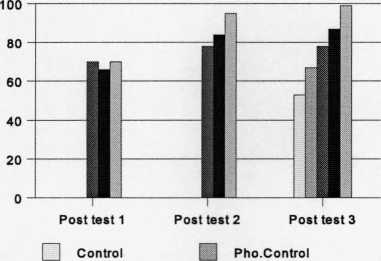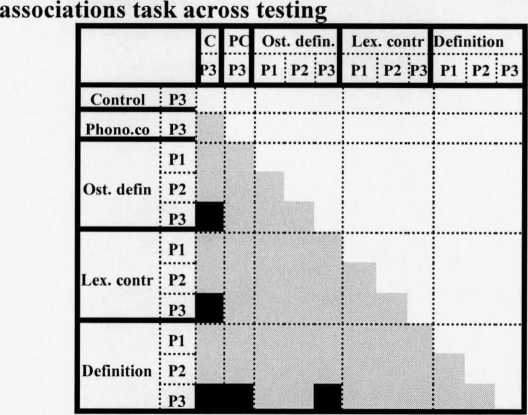Figure 7.17 Total number of appropriate justifications provided in the association task
by group across testing

fH Oste.Definition H Lex-Contrast
I I Definition
Is there a differential impact of the type of exposure to new lexical items that the children
receive on the provision of appropriate justifications?
Children’s provision of appropriate justifications (see design section) differed significantly
by group during post test 3 (Kruskal-Wallis I-Way ANOVA: X2= 21.9, df = 4, p<.0005).
No significant differences were found for post tests 1 and 2. Particularly as diagram 7.7
shows, during post test 3 the Ostensive definition group provided significantly more
justifications than the Control group (Wilcoxon: Z=2.9, p<.005); the Lexical contrast group
provided significantly more justifications than the Control group (Wilcoxon: Z=3.5,
p<.0000) and the Definition group provided significantly more justifications than the Control
group (Wilcoxon: Z=3.2, p<.0000) .Furthermore, the Definition group provided significantly
more justifications than the Phonological control (Wilcoxon: Z=4.3, P<.000) and Ostensive
definition group (Wilcoxon, Z=4.1, p<.000).
Diagram 7.7 Significant group differences in the provision of justifications in the

Abbreviations: C=Control PC∕Phono.Co= Phonological control; Ostdefin-=Ostensive definition; Lex. contr. Lexical contrast
238
More intriguing information
1. Gianluigi Zenti, President, Academia Barilla SpA - The Changing Consumer: Demanding but Predictable2. Campanile Orchestra
3. A MARKOVIAN APPROXIMATED SOLUTION TO A PORTFOLIO MANAGEMENT PROBLEM
4. The Environmental Kuznets Curve Under a New framework: Role of Social Capital in Water Pollution
5. The name is absent
6. Business Networks and Performance: A Spatial Approach
7. Retirement and the Poverty of the Elderly in Portugal
8. Quality practices, priorities and performance: an international study
9. Multifunctionality of Agriculture: An Inquiry Into the Complementarity Between Landscape Preservation and Food Security
10. Telecommuting and environmental policy - lessons from the Ecommute program